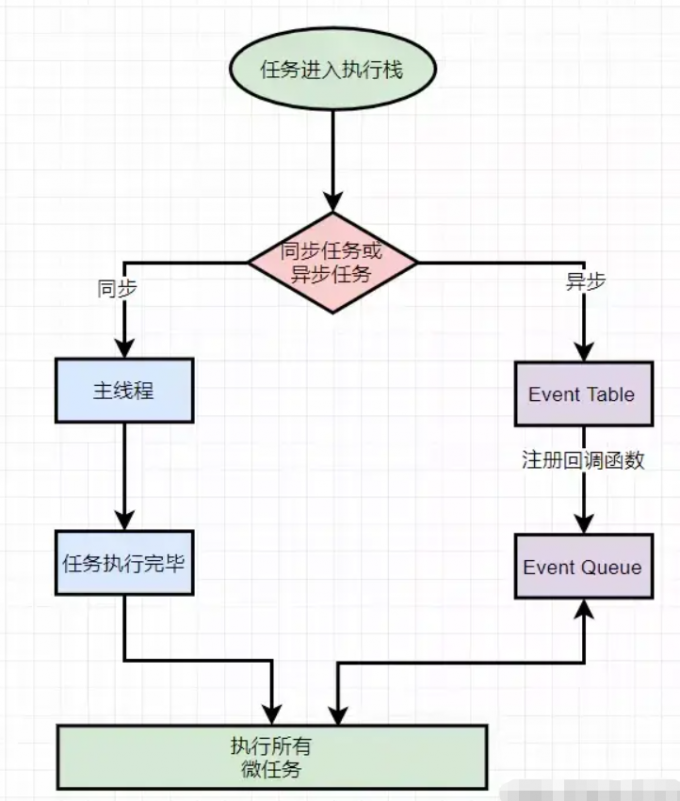js 异步…
eventLoop
Event Loop 执行顺序图:

异步代码常见规范
- reject 一个 Error 对象
1
2
3
4
5
|
Promise.reject("error reason");
Promise.reject(new Error("error reason"));
|
- 不要在 Promise 上使用 async
不要把 async 函数传递给 Promise 构造函数,因为没有必要,其次如果 async 函数异常,那么你的 promise 并不会 reject
1
2
3
4
5
6
|
new Promise(async (resolve, reject) => {})
new Promise((resolve, reject) => { async function(){coding....}()})
|
- 不要使用 await 在循环中
尽可能将这写异步的任务改为并发,可以大幅提高代码执行效率
1
2
3
4
5
6
7
8
9
10
11
12
|
for (const apiPath of paths) {
const { data } = await request(apiPath);
}
const results = [];
for (const apiPath of paths) {
const res = resquest(apiPath);
results.push(res);
}
await Promise.all(results);
|
- 不要再 Promise 中使用 return 语句
Promise 构造函数不希望回调返回任何形式的值
return 一般用来控制该函数中的执行流程
1
2
3
4
5
|
new Promise((resolve, reject) => {
return resolve(1);
console.log("2");
});
|
1
2
3
4
5
6
7
8
9
10
|
new Promise((resolve, reject) => {
if (isOK) return "ok";
return "not ok";
});
new Promise((resolve, reject) => {
if (isOK) resolve("ok");
reject(new Error("not ok"));
});
|
- 别忘了异常处理
1
2
3
4
5
6
7
|
asyncPromise().then(() => {});
asyncPromise()
.then(() => {})
.catch(() => {});
|
1
2
3
4
5
6
7
8
9
10
|
const result = await asyncPromise()
try {
const result = await asyncPrmise()
} catch() {
}
|
